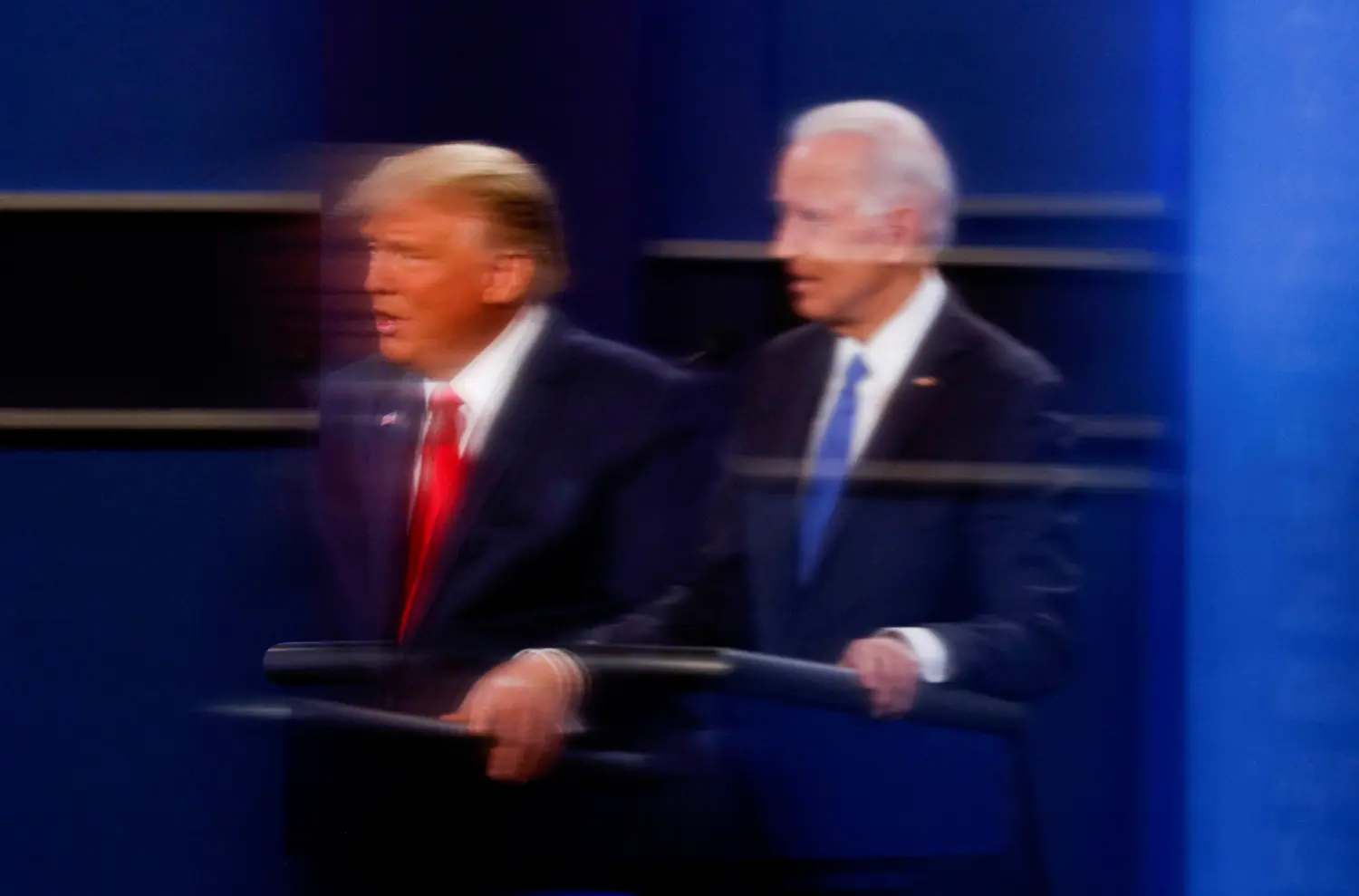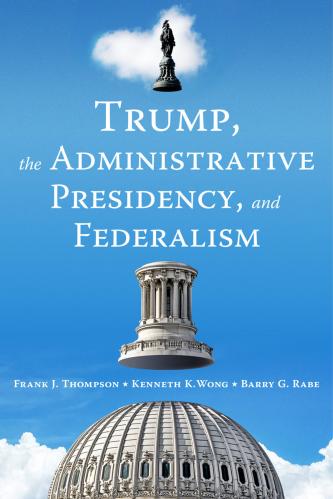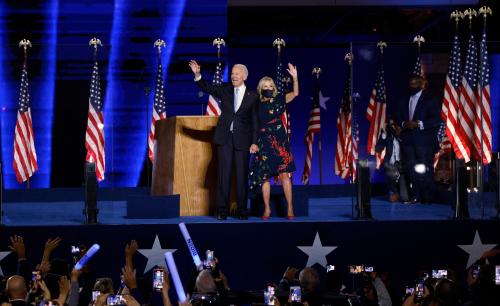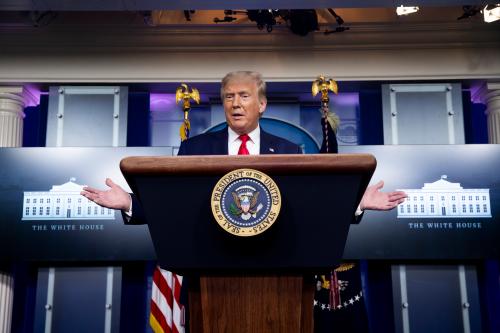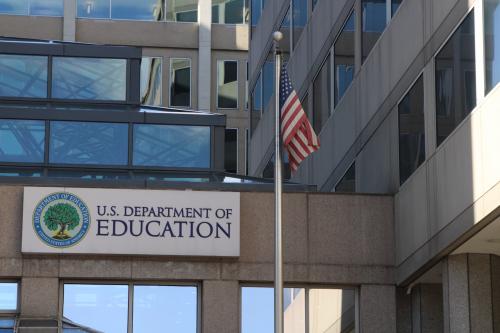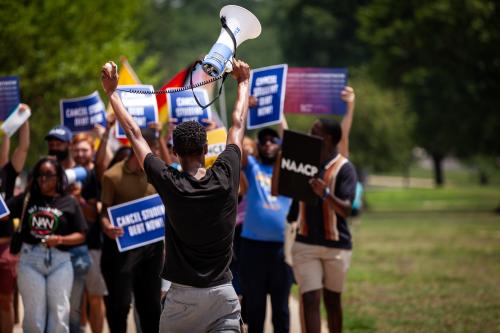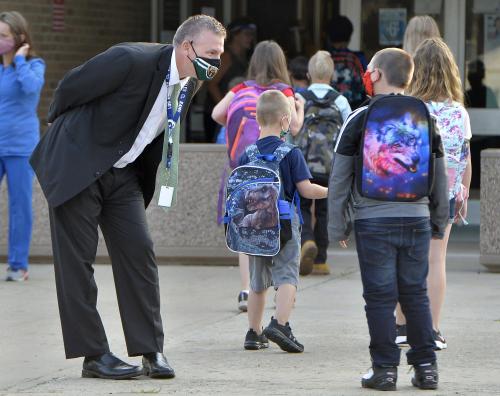Introduction
On the first day of his presidency, Joe Biden signed Executive Order 13985.“Our Nation deserves an ambitious whole-of-government equity agenda,” the order states. “It is therefore the policy of my Administration that the Federal Government should pursue a comprehensive approach to advancing equity for all.” This order triggered a comprehensive review of federal policy and practice to eliminate governmental barriers to equal access to public education and other services.
Almost four years earlier, in April 2017, then-President Donald Trump issued his first executive order on K-12 education. It declared, “It shall be the policy of the executive branch to protect and preserve State and local control over the curriculum, program of instruction, administration, and personnel of educational institutions, schools, and school systems, consistent with applicable law.” This order also catalyzed a review of federal regulation, this time with the goal of identifying practices that undermined state and local control of education.
These early executive orders from the first 100 days of the two most recent presidencies offer sharply different visions of the role that the federal government should play in elementary and secondary education. While Trump vowed to safeguard state control by limiting federal involvement, President Biden advances a strategy of federal activism to address structural racism and educational inequality. In regulating education policy, these orders also exemplify increasing presidential reliance on executive and administrative action to further social policy priorities.
U.S. presidents have long enjoyed broad executive power. Article II, Section I of the U.S. Constitution grants all executive power to the president. Executive-directed or unilateral actions have become increasingly common as political institutions become more polarized. Executive orders and other administrative actions maintain the force of law, but they are seldom subject to congressional checks. Presidents also have a wide range of administrative tools at their disposal to advance their policy priorities, including proclamations, memoranda, “Dear Colleague” letters, and legal actions.
“Despite America’s tradition of state and local control over education, there are ample examples of presidents from both parties using unilateral actions to promote key education policy changes.”
Despite America’s tradition of state and local control over education, there are ample examples of presidents from both parties using unilateral actions to promote key education policy changes. Republican President Dwight Eisenhower issued Executive Order 10730, which federalized the Arkansas National Guard to enforce racial desegregation in Little Rock High School in 1957 following the Brown v. Board of Education decision. Republican President George H.W. Bush convened the first national education summit and helped launched the Goals 2000 initiative, which catalyzed a decadeslong movement toward standards-based education and growing federal influence over curriculum and instruction. Democratic President Barack Obama used waivers to gain state assurances in adopting Common Core educational standards and educator evaluation in exchange for not being punished for failing to meet the student proficiency targets established in the No Child Left Behind Act.
Given the increasing prominence of the administrative presidency, this report focuses on the ways in which Biden and Trump (and their staffs) have pursued unilateral actions in K-12 education policy. Our review of five years of policy and guidance documents suggests that, although President Biden has issued more unilateral actions than President Trump did, both presidents leveraged executive and administrative action extensively, albeit for divergent policy objectives. Despite the continued prominence of the administrative presidency, we also find that state responses to unilateral action can mediate presidential power.
In the proceeding sections, we describe our study methods and then discuss four key findings that emerge from our analysis. We conclude by considering implications of presidential reliance on unilateral actions in pursuing education policy.
Study methods
For our analysis, we reviewed executive orders, presidential memos, guidance documents, fact sheets, FAQs, and policy letters that were issued by the White House, or one of the relevant executive departments/federal agencies between Jan. 20, 2017–when President Trump assumed office–and Jan. 20, 2022– the last day of the first year of the Biden presidency. To locate pertinent documents, we first reviewed the policy guidance section of each department’s official website and compiled all guidance that was directly relevant to K-12 education. In cases where departments did not have a central guidance portal, we reviewed the guidance portal for each individual office or agency within that department. In addition, we used Bloomberg Law to review all amicus briefs for the United States that were submitted in federal courts during this same time period.
In total, we compiled 736 executive and administrative actions. We then coded each action by substantive policy area or service population, and whether it aimed to increase or decrease the federal role in K-12 education. We focus on counts of policies to quantify the volume of administrative action and to identify broad trends in each president’s use of executive power. Throughout, we complement this analysis with more detailed exploration of particularly consequential actions, as well as discussion of state responses to presidential action. Although this method cannot fully capture the magnitude and intensity of presidential influence, reviewing policy guidance across executive departments over five years allows us to document key differences in each administration’s approach to education governance.
Four key findings emerged from our analysis of recent executive and administrative action.
Finding #1: Biden was more likely than Trump to take unilateral action, especially on equity issues.
President Biden made greater use of unilateral action in education in the first year of his presidency, with 241 executive or administrative actions in his administration’s first year relative to 66 in the Trump administration’s first year (Table 1). During the full four-year term, the Trump administration issued 495 actions.
Table 1: Education-related executive and administrative actions in selected departments, Trump and Biden years
| Administration | Number of actions |
| Biden’s First Year | 241 |
| Trump’s First Year | 66 |
| Trump’s Four-Year Term | 495 |
In this time, President Trump issued only four executive orders that explicitly addressed education equity. In contrast, as of Jan. 20, 2022, President Biden had already issued eight orders that referenced educational equity for students of color, women, and LGBTQ students. For example, Executive Order 14021 pledges an educational environment free from discrimination based on sex, sexual orientation, or gender identity. Biden also issued 46 memoranda about education, including a 2021 memo on combating racism toward Asian Americans and Pacific Islanders. For both Biden and Trump, the majority of K-12 unilateral actions during the first year of presidency originated from the U.S. Department of Education. However, within this category, action from the agency’s Office for Civil Rights accounts for 8% of Biden’s actions but only 3% of those taken by Trump (Figure 1).
Our analysis suggests that, so far, Biden has followed many previous presidents from his party in using unilateral action to address educational inequity directly. These early initiatives show that Biden has taken steps toward fulfilling his campaign promise to foster a climate of inclusion and respect, particularly for historically marginalized groups.
Finding #2: Trump used unilateral action to reduce federal protections for underserved students while advancing protections for religious students and private school students.
Another key finding from our research is that President Trump regularly used unilateral action to reduce federal oversight in education, particularly by rescinding Obama-era protections for historically marginalized students. When used during the early days of a new administration, executive-led actions often constitute a rapid policy reversal of the preceding administration. After Trump assumed the presidency, the Department of Justice and the Department of Education jointly issued a Dear Colleague letter withdrawing an Obama-era guidance on non-discriminatory discipline. The Trump administration also scaled back investigations into civil rights violations, taking a more lenient approach to resolving complaints that resulted in a 78% increase in closures compared to the last two years of the Obama administration.
In rescinding and reducing federal oversight, Trump delivered on the promise expressed in his first executive order on education. Our analysis finds that nearly 71% of President Trump’s guidance policies reduced federal oversight, compared to only 39% of President Biden’s actions (Figure 2). Many of the policies that limited oversight across both administrations provided additional flexibilities for schools during the COVID-19 pandemic. When policies that explicitly address COVID-19 are excluded from the analysis, Trump was still more likely than Biden to reduce federal oversight: 53% of President Trump’s policies and 30% of President Biden’s removed or lessened federal regulations around education.
In fact, Trump issued three executive orders explicitly curtailing government regulation, clearly signaling that the Trump administration would take a more passive role in enacting federal policy. This assertion was born out in Secretary of Education Betsy DeVos’ lenient response to state implementation plans for the Every Student Succeeds Act (ESSA).
Despite President Trump’s clear preference for diminished oversight, however, our research finds that the Trump administration increased government protections for two groups: religious students and private school students. The Trump administration took 145 unilateral actions that increased or maintained the federal role in education; 10% of these policies either increased support for students in non-public schools or protected freedom of religious expression in public school settings. Trump issued guidance around protecting the right to pray in schools and affording religious organizations equal consideration for federal grants. In 2020, DeVos released guidelines requiring states to provide all students in private schools with “equitable services” under the Coronavirus Aid, Relief, and Economic Security (CARES) Act. In contrast, ESSA only requires equitable services for specific high-needs private school students. Guaranteeing equal access to all students had the potential to redirect funding from public to private schools. Although the guidance faced legal challenges and was ultimately struck down, this assertive support of private school students demonstrates Trump’s willingness to use unilateral action to advance the rights of certain groups of students, perhaps at the expense of other, historically marginalized groups.
Finding #3: Despite the force of the administrative presidency, selective state opposition serves as a check on unilateral power.
Both Biden and Trump have made wide use of executive and administrative action, although they have used presidential power to pursue divergent policy priorities. Despite the prevalence of the administrative presidency, state resistance can limit the influence of presidential power on education policy. In the U.S. federalist system, states exercise authority over areas not specifically delegated to the U.S. government in the Constitution, and that includes responsibility for funding and delivering public education.
In the context of this decentralized education governance, states often directly oppose presidential initiatives. For example, in February 2017, Secretary DeVos confirmed in a Dear Colleague letter that the department was no longer investigating complaints from transgender students barred from school bathrooms that matched their gender identity. In an amicus brief filed in the 11th Circuit Court of Appeals, 20 Democratic state attorneys general supported the rights of a Florida transgender student to use the boys’ bathroom at school. Officials in Iowa, New Jersey and Colorado also issued new laws and guidelines clarifying state-level protections for transgender students.
Similarly, President Biden’s attempts to mandate vaccination for school staff faced state opposition. In November 2021, Biden’s Occupational Safety and Health Administration (OSHA) issued an emergency rule that would have required school districts in 26 states and two territories with OSHA-approved workplace safety plans to mandate vaccination for teachers and staff. The action encountered a litany of legal challenges from state governments, with 27 states filing lawsuits by January 2022. On Jan. 13, 2022, the Supreme Court found in favor of petitioners in a multi-state lawsuit, instating a nationwide injunction on OSHA’s vaccine mandate.
As both of these examples demonstrate, state resistance through legal and legislative action can limit presidents’ ability to realize their educational policy priorities.
Finding #4: States can also mediate presidential power by continuing the actions of past administrations.
The speed of policy change via unilateral action is both a strength and weakness. Executive action allows a new administration to change policy directions without having to invest time and political capital in building a legislative coalition for more permanent policy change. However, these executive-directed policy changes are also subject to reversal by unilateral actions in succeeding administrations. Our analysis finds that state actions can further mediate executive power by maintaining the priorities of past administrations.
For example, in September 2020, President Trump issued an executive order banning federal agencies from offering trainings that addressed “divisive topics,” such as implying that the United States is “fundamentally racist or sexist” or suggesting that individuals have any “privilege, status or beliefs” based on their race or sex. Throughout 2021, evidence emerged that Trump’s 2020 administrative actions had a profound effect on state-level curriculum legislation. By the end of that year, 32 states had introduced bills and 13 states had passed laws preventing the teaching of so-called critical race theory (CRT) or otherwise restricting how teachers discuss race and gender in the classroom. CRT is a scholarly approach to studying law and history that investigates how racism is maintained by structural forces. In recent debates over K-12 curriculum, the term is frequently misapplied to encompass any instruction that addresses race-based inequities. The genesis of state-level legislation around curriculum and race is directly related to President Trump’s executive action in fall 2020. In fact, laws in Tennessee, Idaho, Oklahoma, Iowa, New Hampshire, and Arizona incorporate text that is similar or identical to the list of “divisive issues” included in Trump’s executive order.
On his first day in office, President Biden signed an executive order reversing the Trump-era restrictions on discussions of divisive topics. However, given codification of Trump priorities in state legislation, restrictions on classroom discussion of systemic racism endure in more than half of the states. This demonstrates that states responses to executive action can limit the potency of executive action by making it harder to reverse a predecessor’s policy priorities.
Implications: Education policy and the November 2022 elections
Overall, our analysis both affirms and complicates the power of the administrative presidency in influencing recent changes in education policy. Operating in the general absence of institutional checks from other branches of government and yet maintaining the force of law, executive-directed and unilateral actions are a distinctive feature of presidential power. Despite a long tradition of Republican rhetoric around decreasing federal influence in education, we find that both President Trump and President Biden made extensive use of executive and administrative action to advance their educational agendas. Importantly, though, they used this power to pursue divergent priorities. While Trump used executive tools to promote state policy authority and diminish federal direction on civil rights, Biden’s actions aim at broadening equity, inclusion, and diversity in our public schools and strengthening federal oversight on state roles.
“Because unilateral action enables quick policy change without requiring political consensus, it has become an increasingly important presidential tool in times of political polarization.”
At the same time, our analysis demonstrates that state actions can serve as an important source of checks and balances on presidential power. Over the past five years, states have used legislative and legal action to counteract presidential attempts to dictate education policies in areas from vaccinations to rights for transgender students. Because unilateral action enables quick policy change without requiring political consensus, it has become an increasingly important presidential tool in times of political polarization. However, our analysis demonstrates that federalism can limit the potency of unilateral action when states hold onto the policy priorities of past administrations.
Biden’s extensive use of unilateral actions and the challenges launched by selective states signal the prominence of education policy in the upcoming November election. The polarized state reaction forecasts a perfect storm for a collision over education policy. Two visions that we discussed in this report–Biden’s equity agenda and Trump’s efforts to protect state rights–will be tested in this November’s election, as 36 states choose their governors and 15 states elect their school superintendent or school-board members. Outcomes of these state elections will affect state reaction to the competing vision of student right protections versus state right consolidation in our public schools.


